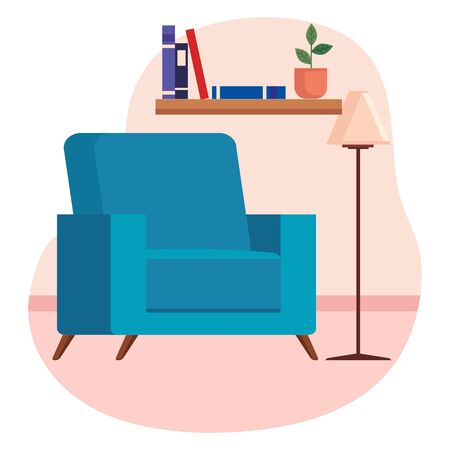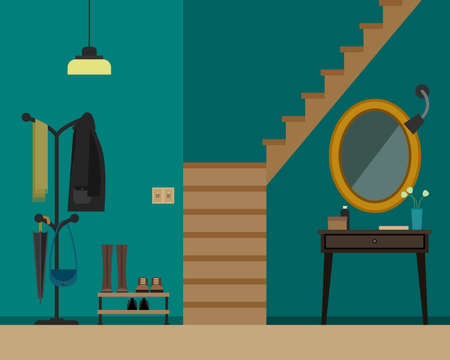Introduction to Modern Minimalism
Modern minimalism is more than just a design trend—it’s a lifestyle movement that has captivated homeowners and designers across the United States. Rooted in the philosophy of “less is more,” modern minimalist home design emphasizes simplicity, functionality, and intentional living. This approach strips away excess, favoring clean lines, open spaces, and a curated selection of furnishings that serve both aesthetic and practical purposes. As American culture evolves to value mindfulness and sustainability, minimalism has surged in popularity. The appeal lies not only in its timeless visual charm but also in how it fosters tranquility and clarity in our busy, clutter-filled lives. Whether you’re renovating an urban loft or building a suburban retreat, embracing modern minimalism means creating spaces that feel open yet inviting, pared-back yet deeply personal. In this article, we’ll dive into real-life case studies that showcase how successful modern minimalist designs are redefining what it means to live well in contemporary America.
Urban Retreat: City Loft Transformations
Modern minimalist design has revolutionized city living, offering elegant simplicity and a calming escape from the urban hustle. In this section, we spotlight standout case studies of lofts and apartments where minimalism merges with metropolitan practicality, crafting inviting sanctuaries in the heart of America’s most dynamic cities.
Case Study Highlights: Minimalist Lofts in Action
| City | Homeowner Goals | Design Solutions | Key Features |
|---|---|---|---|
| New York | Maximize space, enhance light, reduce clutter | Open-plan layout, monochrome palette, hidden storage | Floor-to-ceiling windows, floating shelves, integrated kitchen appliances |
| Chicago | Create a serene work-from-home environment | Multi-functional furniture, soft neutral tones | Convertible desk-beds, minimalist lighting fixtures |
| San Francisco | Blend modernity with historic architecture | Sleek finishes contrasting exposed brick and beams | Minimalist art displays, reclaimed wood accents |
Clever Storage Solutions for Compact Spaces
Minimalist city lofts thrive on smart organization. Designers utilize built-in cabinetry and streamlined furnishings to keep essentials tucked away, making even the smallest square footage feel spacious. For example, New York loft owners often opt for under-bed storage and wall-mounted desks that fold up when not in use—perfect for maximizing living areas without sacrificing style.
The Impact: Peaceful Living Amid Urban Energy
These inspiring urban case studies reveal how minimalist design can transform crowded apartments into personal retreats. By prioritizing quality over quantity and embracing negative space, homeowners gain not just functional homes but also mental clarity—a true luxury in any American city.

3. Suburban Serenity: Streamlined Family Homes
Modern minimalist design isn’t just for chic city lofts or high-rise condos—it’s also making waves in America’s suburban neighborhoods, redefining what it means to live simply and stylishly as a family. Let’s explore how real-life homeowners have embraced minimalism to transform their suburban spaces into sanctuaries of calm and functionality.
Case Study: The Johnson Family Retreat in Austin, TX
The Johnsons traded bulky furniture and overflowing decor for clean lines and open layouts. Their home features wide-plank hardwood floors, a monochromatic palette with pops of natural wood, and built-in storage that keeps toys and daily clutter out of sight. A large sliding glass door opens onto a minimalist backyard patio, merging indoor comfort with outdoor tranquility—a signature move for Texas families who love entertaining under the stars.
Smart Solutions for Busy Households
Minimalist suburban homes often use multi-functional furniture—think kitchen islands that double as homework stations or sleek benches with hidden storage. By minimizing visual noise, these homes help parents focus on what matters most: quality time with their kids. The open-concept living areas make it easy to keep an eye on little ones while prepping dinner or catching up on emails.
Bringing Harmony to Everyday Living
These case studies prove that minimalist principles can thrive outside urban centers. With thoughtful design choices—like neutral colors, strategic lighting, and unadorned windows—suburban families find balance between form and function. Minimalism isn’t about having less; it’s about making room for more meaningful moments together at home.
4. Making Small Spaces Feel Grand
In the American housing landscape, where urban apartments and compact studios are increasingly common, the minimalist approach is a game changer. Modern minimalist design is not just about reducing clutter; it’s an intentional method to create environments that feel open, airy, and inviting—even when square footage is at a premium.
The Art of Space Optimization
Minimalist homes in the U.S., especially in cities like New York or San Francisco, use clever spatial strategies to maximize comfort and style. Think flexible furniture, built-in storage, and multi-functional pieces—each chosen for both aesthetics and utility.
Key Minimalist Techniques in Small Homes
| Technique | Description | Example |
|---|---|---|
| Open Floor Plans | Remove unnecessary walls to create flow between living spaces. | Studio apartments with kitchen, living, and bedroom areas combined into one seamless zone. |
| Neutral Color Palettes | Use whites, beiges, and soft grays to enhance light and space perception. | White walls paired with natural wood accents for warmth without visual clutter. |
| Multi-functional Furniture | Select pieces that serve more than one purpose. | Sofa beds, expandable dining tables, or ottomans with hidden storage. |
| Integrated Storage Solutions | Built-in cabinets and shelves to keep surfaces clear. | Wall-mounted shelving units above desks or beds. |
| Strategic Use of Mirrors | Add mirrors to reflect light and make rooms appear larger. | A full-length mirror opposite a window to double perceived space. |
The Comfort Factor: Less Really Is More
By stripping away excess, modern minimalist interiors focus on what truly matters: comfort, functionality, and peace of mind. In small American homes, this translates to a lived-in elegance—think plush area rugs over hardwood floors, soft lighting from sleek fixtures, and uncluttered surfaces that invite relaxation after a long day. Every item serves a purpose and contributes to a harmonious whole.
American Minimalism in Action: Studio Success Story
Take the case of a 500-square-foot studio in Chicago’s River North neighborhood: The owners used built-in cabinetry along one wall to house everything from their TV to seasonal clothing. A Murphy bed folds away during the day, transforming the space into an airy living room. Light linen curtains divide zones without closing off the space. The result? A home that feels twice as big as its footprint—and proves that minimalism isn’t about having less, but about making room for more of what you love.
5. Sustainability and Smart Living
Modern minimalist home design isnt just about clean lines and uncluttered spaces—its also about making choices that respect the environment. Across the U.S., a new wave of homeowners are proving that less really can be more when it comes to sustainability. These case studies highlight how minimalism and eco-conscious living work hand in hand, without sacrificing style or comfort.
Eco-Friendly Materials and Thoughtful Sourcing
In Portland, Oregon, the Miller Residence is a shining example of this ethos. The home features reclaimed wood flooring, energy-efficient windows, and non-toxic paints, showcasing how sustainable materials seamlessly integrate with minimalist interiors. The use of locally sourced stone for countertops not only reduces the carbon footprint but also adds a unique regional flair to the sleek kitchen design.
Smart Technology for Efficient Living
Tech-savvy minimalists in Austin, Texas took things further with their “Connected Haven.” This case study demonstrates how smart thermostats, automated lighting, and water-saving fixtures can reduce energy consumption while maintaining the home’s airy, contemporary vibe. The open-concept living space feels even more expansive thanks to the clever integration of technology that manages resources invisibly in the background.
Balancing Aesthetics with Responsibility
Perhaps most inspiring is a Los Angeles bungalow that marries passive solar design with minimalist architecture. Large south-facing windows fill the home with natural light, while deep roof overhangs keep it cool during hot California summers. Every element—from furniture made of recycled plastics to native drought-resistant landscaping—reflects a commitment to both beauty and environmental stewardship.
These case studies reveal that modern minimalism isn’t just a style; it’s a lifestyle rooted in conscious choices. By blending sustainability with smart design, these homes prove that you can tread lightly on the planet while living large in both comfort and style.
6. Key Takeaways & Design Tips
Actionable Lessons for Modern Minimalist Success
The case studies of successful modern minimalist homes across the U.S. reveal valuable lessons for both homeowners and designers aiming to craft spaces that feel fresh, functional, and uniquely American. Here’s how you can translate these insights into your next home project.
1. Prioritize Function Over Form
Minimalism isn’t about stripping away personality—it’s about making every element purposeful. Choose furniture and fixtures that serve multiple functions, which is especially helpful for open-plan American homes where rooms often blend together.
2. Embrace Quality Materials
From reclaimed wood to high-performance countertops, investing in durable, timeless materials pays off. Many case studies highlight how American homeowners favor finishes that age gracefully and require little upkeep—think stone, steel, and solid hardwoods.
3. Maximize Natural Light
Large windows and open layouts are a staple in successful minimalist homes coast to coast. Letting in plenty of daylight not only saves energy but also creates an inviting, uplifting atmosphere perfect for family life or entertaining.
4. Declutter with Intention
American minimalism is about more than a clean look—it’s about living with less stress. Built-in storage, concealed cabinets, and smart organizational systems keep spaces tidy without sacrificing style or comfort.
5. Add Warmth Through Textures
To avoid the “sterile” feel sometimes associated with minimalism, integrate cozy textiles—like plush rugs, linen curtains, or leather accents. These touches soften sharp lines and make minimalist spaces feel welcoming from Boston to Los Angeles.
Bonus Tip: Reflect Your Lifestyle
Ultimately, the most successful minimalist homes are tailored to their owners’ daily rhythms. Whether it’s a mudroom for busy suburban families or a dedicated workspace for remote professionals, design with your unique needs front and center.
By following these key takeaways from standout American case studies, you can create a modern minimalist home that’s as practical as it is stylish—proving that less truly can be more when done right.


